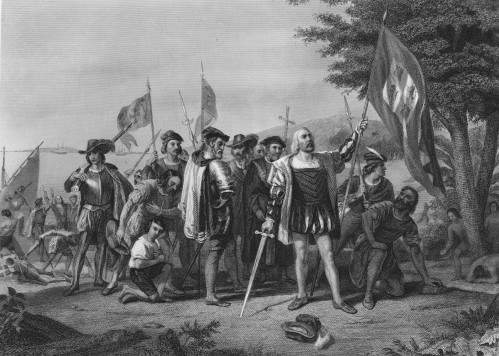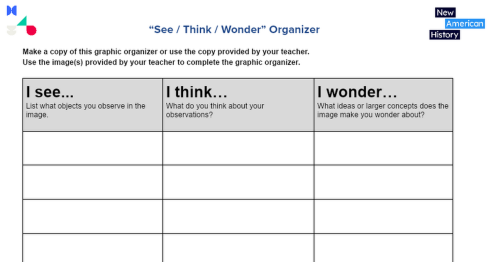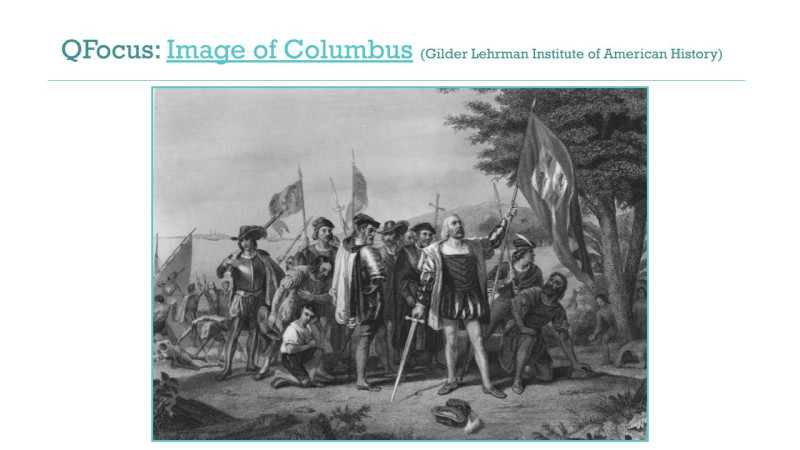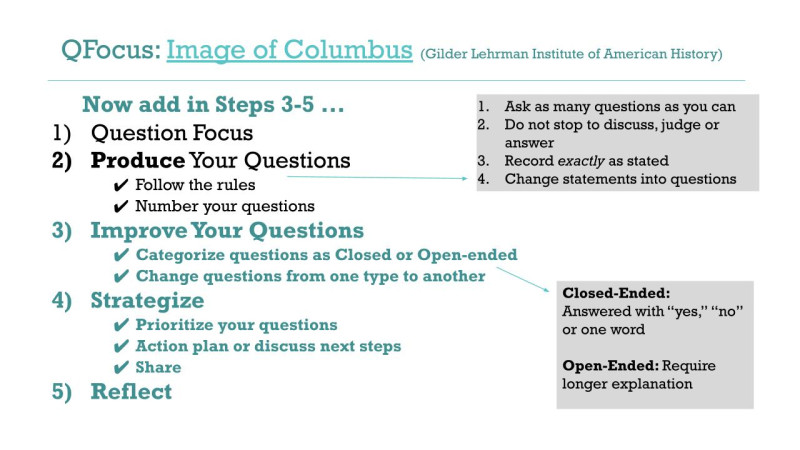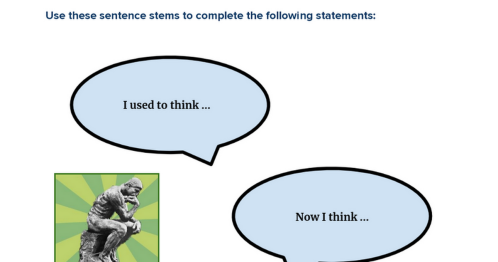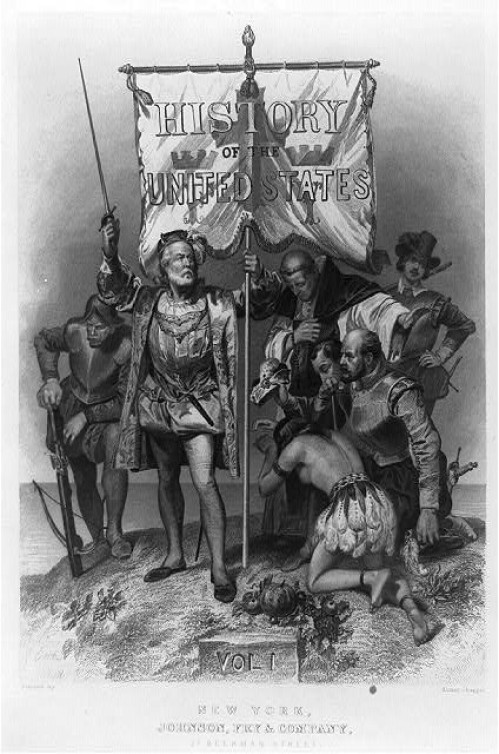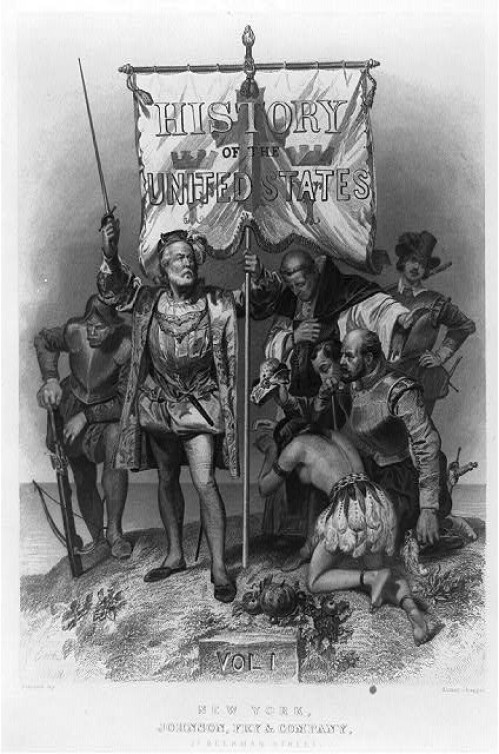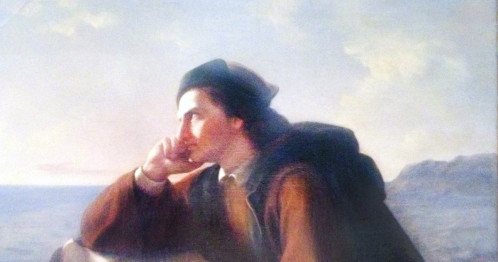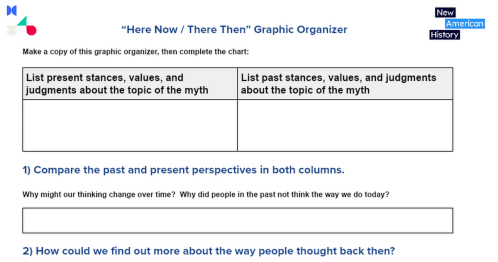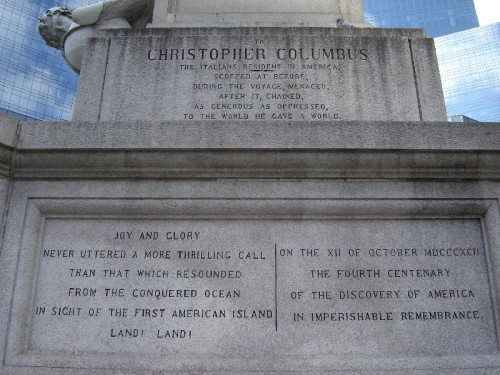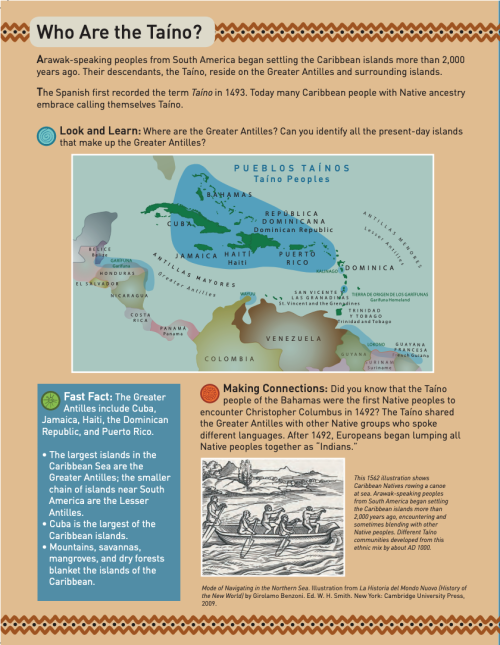This work by New American History is licensed under a Attribution-NonCommercial-ShareAlike 4.0 (CC BY-NC-SA 4.0) International License. Permissions beyond the scope of this license may be available at newamericanhistory.org.
The Myth of Columbus
View Student Version
Standards
C3 Framework:D2.His.3.6-8.D2.His.3.9-12.
National Council for Social Studies:Theme 2 - TIME, CONTINUITY, AND CHANGETheme 5 - INDIVIDUALS, GROUPS, AND INSTITUTIONS
College Board AP U.S. History (Fall 2020)HISTORICAL THINKING SKILLS COVERED:SKILL 4.A – Identify and describe a historical context for a specific historical process or development.SKILL 5.A: Identify patterns or connections between historical developments.
TOPIC 1.3:THEME 6: AMERICA IN THE WORLD (WOR) This theme focuses on the interactions between nations that affected North American history in the colonial period and on the influence of the United States on world affairsUNIT 1: LEARNING OBJECTIVE C. Explain the causes of exploration and conquest of the New World by various European nations.KC-1.2.I.A: European nations’ efforts to explore and conquer the New World stemmed from a search for new sources of wealth, economic and military competition, and a desire to spread Christianity
TOPIC 1.6:THEME 6: AMERICA IN THE WORLD (WOR) This theme focuses on the interactions between nations that affected North American history in the colonial period and on the influence of the United States on world affairsUNIT 1: LEARNING OBJECTIVE F. Explain how and why European and Native American perspectives of others developed and changed in the period.KC-1.2.III - In their interactions, Europeans and Native Americans asserted divergent worldviews regarding issues such as religion, gender roles, family, land use, and power.
Teacher Tip: Think about what students should be able to KNOW, UNDERSTAND and DO at the conclusion of this learning experience. A brief exit pass or other formative assessment may be used to assess student understandings. Setting specific learning targets for the appropriate grade level and content area will increase student success.
Suggested Grade Levels: High School (9-12), especially Advanced Placement U.S. History courseSuggested Timeframe: Two 90-minute class periods
Suggested Materials: Internet access via laptop, tablet or mobile device, projection screen
Key Vocabulary
collective memory - the shared memories, knowledge, and information that make up the way a social group remembers the past and forms an identity
disentangle - to unravel or free from difficulty
expeditions - a journey or voyage by a group of people, usually for the purpose of exploration, scientific research, or war
false narrative - a story that many people believe is true, but doesn't accurately reflect what happened
historical myths - stories told about people or events that are an embellishment and exaggeration of truth and facts
historical memory - the ways that countries and other groups create and identify with certain narratives about people, places, or events. Historical memories form the foundation of social and political identities.
imperishable - enduring forever
indigenous people - the earliest known inhabitants of a place
inscription - words and phrases engraved on something, such as a monument or book
legacy - stories and information passed from one generation to the next
monarchy - a form of government in which a person is the sovereign head of state of an empire or kingdom, usually for life
mythology - a popular belief or story that has grown up around someone or something
scoff - to mock or deride someone or something
Taino - indigenous people who interacted with Columbus and his crew and who lived on various islands of the Caribbean Sea, such as Cuba, Hispaniola, Jamaica, Puerto Rico, and the Bahamas.
tribute - an act, statement, or physical item that is meant to show praise and admiration, plain, straightforward, not embellished
Read for Understanding
Teacher Tips:
If you are teaching remotely, consider using videoconferencing to provide opportunities for students to work in partners or small groups. Digital tools such as Google Docs or Google Slides may also be used for collaboration. Rewordify helps make a complex text more accessible for those reading at a lower Lexile level while still providing a greater depth of knowledge.
This Learning Resource uses the Question Formulation Technique, a multi-step group activity from the Right Question Institute that allows students to strengthen their skills in creating their own questions. It will be helpful to read the QFT Outline before conducting the Explore activity. You may use Turn and Talk to allow students to work with an “elbow partner” for brief collaborations. In addition, this Learning Resource uses “Thinking Routines” from Project Zero, a research center at the Harvard Graduate School of Education that has developed learning strategies that encourage students to add complexity to their thought processes. For an overview of Project Zero’s methodology, you may want to read its Exploring Complexity Bundle. Specifically for this lesson, students will use these thinking routines: See, Think, Wonder; I Used to Think...Now I Think; Take Note; Here Now/There Then.
Lastly, these Learning Resources follow a variation of the 5Es instructional model, and each section may be taught as a separate learning experience, or as part of a sequence of learning experiences. We provide each of our Learning Resources in multiple formats, including web-based and as an editable Google Doc for educators to teach and adapt selected learning experiences as they best suit the needs of your students and local curriculum. You may also wish to embed or remix them into a playlist for students working remotely or independently.
For Students:
As children, you may have heard stories or legends about an Italian explorer named Christopher Columbus. Some claim he "Discovered America." For indigenous people, this is believed to be a false narrative. In this learning resource, you will explore the Myth of Columbus and draw your own conclusions based on the facts and evidence you will research and analyze.Engage:
What is your historical memory of Columbus?
Christopher Columbus is remembered by many Americans as the person who “discovered” America. His name and likeness exist all over the nation’s public landscape: on the names of street signs, cities, and universities, as well as on monuments in public squares. And of course, October 11 in America has been Columbus Day -- a federal holiday -- since 1937. However, the historical Columbus -- borne from research and an examination of evidence -- can sometimes contrast with America’s collective memory of Columbus as a brave and intrepid explorer, worthy of praise and admiration. In recent years, America’s collective memory of Columbus has been more heavily scrutinized. Should we honor a man who symbolizes European colonialism, who ushered in an era of conquering indigenous people?
Read this CNN article about the recent removal of Columbus statues.
Turn and talk to a partner to answer the following questions about the article after you’ve both read it independently (if working remotely, your teacher may let you work using a collaborative tool such as Google Docs or shared Google Slides deck, or meet virtually via videoconferencing):
- What motivated the removal of the Columbus statues?
- What interested or surprised you about the cities where statues are being removed?
- When/why were the statues originally placed in these cities or spaces?
- Why do you think the statues are being removed at this time?
Take a few minutes to analyze this image of Columbus. Use the “See, Think, Wonder” graphic organizer, adding at least 1 idea for each category.
After you complete the organizer, share your ideas in small groups or with the whole class as directed by your teacher. If working remotely, you may use breakout rooms through videoconferencing, or share via a collaborative document such as Google Docs or Google Slides.
Your teacher may ask you to record your answers on an exit ticket.
Explore:
How can we question Columbus and his legacy?
In your group of three or four, use the Question Formulation Technique. The Question Focus prompt is the same Columbus image you previously analyzed.
After completing Steps 1 - 4, each group researches their priority questions, using Step 5. After the research has been completed, ask a representative from each group to share 1 question and 1 researched answer with the class, as directed by your teacher.
After participating in the QFT, reflect on your learning using the “I Used to Think...Now I Think” Thinking Routine:
- I used to think ________ about Columbus.
- Now, I think _______ about Columbus.
- How is the image a part of the historical myth of Columbus?
Your teacher may ask you to record your answers on an exit ticket.
Explain:
Who was Columbus, the man, and who was Columbus, the myth?
COLUMBUS, THE MAN: Who was he? Over the centuries, historians have told many versions of the story of the Italian-born explorer whose Caribbean expeditions were funded by the Spanish monarchy. Recently, more complete and more honest accounts of Columbus’ life have led Americans to question how the U.S. should remember Columbus, and how it should disentangle the unvarnished truths about Columbus from the mythology that has developed around him in America’s collective memory. More specifically, to what extent should America retain the tributes (Columbus Day statues and street names), and to what extent should they be replaced or revised to include the story of the indigenous people with whom Columbus interacted? This section includes a scholar’s telling of Columbus’ feats and flaws, as well as a look at how Columbus became a larger-than-life figure in America’s collective memory.
Listen to this podcast segment from the Backstory archives. “Who was Christopher Columbus?” featuring Tony Horwitz, a Columbus scholar and author of “A Voyage Long and Strange.” Your teacher may ask you to listen to this segment together as a whole class, or separately with headphones/earbuds on a mobile device.
Before you play the segment, consider these questions about Columbus as part of the “Take Note” Thinking Routine.
- Who was he?
- What did he do?
After listening to the segment, you will choose ONE question to answer using this graphic organizer. As the podcast audio is playing, don’t try to take notes, just focus so you are fully engaged in listening to this segment from the episode.
When you finish listening to the segment, answer one of the Take Note questions above, as directed by your teacher. If working remotely, or using a device, you may answer using a collaborative tool such as Google Docs or a shared Google Slides deck. You will have an opportunity later for your response to be shared with the class.
COLUMBUS, THE MYTH: How has America’s memory of Columbus changed over time? What caused those changes? This next audio segment from the BackStory archives looks at how America developed its mythology surrounding Columbus over the course of its history.
Listen to this next segment from the Backstory archives, “Making a Myth,” that asks literature scholar and Yale professor Rolena Adorno about the role Washington Irving’s 1828 biography played in creating the Columbus hero myth in America. To prepare for the podcast, review the questions again on an additional copy of the “Take Note” Thinking Routine graphic organizer. After listening to the podcast, you will choose one of the following questions to answer. As the podcast is playing, don’t try to take notes, focus on fully engaging in listening to the episode.
Play the podcast. Your teacher may ask you to listen to this as a class, or with headphones/earbuds on a mobile device. At its end, answer one of the Take Note questions above on your graphic organizer, or using Google Docs or on Google Slides as directed by your teacher. Your teacher will debrief the conversation by reading back student responses to the class and asking follow-up questions, or by asking you to turn and talk to an elbow partner to share your answers.
Explore this Bunk Connection by reading excerpts from “How Columbus, Of All People, Became a National Symbol,” and “Columbus Day Had Value for Italian Americans -- But It’s Time to Rethink It.”
“Columbus Day Had Value for Italian Americans — But It’s Time to Rethink It.”:
- What value did Columbs Day have for Italian-Americans, according to the article?
- Why is it time to rethink the value of Columbus Day, according to the author?
“How Columbus, Of All People, Became a National Symbol”:
- Why did Spain try to suppress the story of Columbus in the 1800s?
- Why did America revive the story of Columbus in the late 1800s?
CONNECT THE TWO EXCERPTS: After you answer these questions, read more about How Connections Work in Bunk, then create a new “tag” for these two Bunk excerpts, creating new connections. Keep in mind, a tag is a key word or phrase that describes a topic and allows it to be found when searching online. After you have created your tag, share it with our team at New American History via Twitter @NewAmericanHist or Instagram @newamericanhistory.
Your teacher may ask you to record your answers to this question on an exit ticket: How has America’s collective memory of Columbus changed over time? What caused those changes?
Elaborate:
What can the Columbus myth teach us about changes over time in the way people or events are remembered?
Review what you’ve learned so far with the Bunk excerpts and BackStory podcast segments:
- How has America come to remember Columbus today?
- How has this interpretation changed?
- How might it continue to change?
Make a copy of this graphic organizer for the “Here Now / There Then” thinking routine to help you best capture your ideas:
Record your answers on a collaborative document such as Google Docs or Google Slides, as directed by your teacher. Your teacher will facilitate a discussion to share student responses to your class.
Working in small groups as directed by your teacher, read and discuss this article from the Smithsonian Magazine entitled, “This Culture, Once Believed Extinct, Is Flourishing,” an article that explores the culture of the Taino, the indigenous people of the Caribbean.
Examine the inscription on this 76-foot-high Columbus Monument, located in Columbus Circle in New York City, one of the best known Columbus statues in the world. The inscription on the base of the statue, written in 1892, reads:
“CHRISTOPHER COLUMBUS THE ITALIANS RESIDENT IN AMERICA, SCOFFED AT BEFORE, DURING THE VOYAGE, MENACED, AFTER IT, CHAINED, AS GENEROUS AS OPPRESSED, TO THE WORLD HE GAVE A WORLD.
JOY AND GLORY, NEVER UTTERED A MORE THRILLING CALL, THAN THAT WHICH RESOUNDED FROM THE CONQUERED OCEAN IN SIGHT OF THE FIRST AMERICAN ISLAND LAND! LAND!
ON THE XII OF OCTOBER MDCCCXCII THE FOURTH CENTENARY OF THE DISCOVERY OF AMERICA IN IMPERISHABLE REMEMBRANCE. ”
Working in your small group, discuss these questions:
- How does the inscription remember Columbus?
- How might the Taino and other indigenous groups think differently about this inscription today?
If working remotely, your teacher may allow you to use breakout rooms through videoconferencing or share via a collaborative document such as Google Docs or Google Slides.
Consider the facts and stories from the Smithsonian Magazine article about the Taino, as well as this infographic.
As a group, create a revised inscription that includes at least three facts about the Taino. Post your group’s answers on a collaborative document such as Google Docs or Google Slides as directed by your teacher..
Your teacher will facilitate a group discussion to share student responses with the class and ask follow-up questions, or by asking you to share your collaborative documents to compare the responses of each of the groups.
Your teacher may ask you to record your answers on an exit ticket.
Extend:
Why do countries create their own myths, and do these myths do more harm than good?
Research another American myth, or a myth from another country’s history. Make a copy of and complete this graphic organizer to analyze the change in the Columbus myth over time, using the “Here Now / There Then” Thinking Routine. Choose a topic from the list, or select your own and ask your teacher to approve your topic before starting your research.
Once you have completed your graphic organizer and cited your sources, answer these reflective questions on page 2 of the graphic organizer:
- What can be “good” about this myth, if anything?
- What can be harmful about this myth?
- Why do you think this myth was created, and what related story can be told in its place to make it more truthful and complete?
Your teacher may ask you to record your answers on an exit ticket.
Citations:
“1492: Columbus in American Memory.” BackStory. Accessed June 22, 2021. https://backstory.newamericanhistory.org/episodes/1492
Asmelash, Leah. “Statues of Christopher Columbus Are Being Dismounted across the Country.” CNN, Cable News Network, 11 June 2020, www.cnn.com/2020/06/10/us/christopher-columbus-statues-down-trnd/index.html.
Battisti, Danielle. “Perspective | Columbus Day Had Value for Italian Americans - but It's Time to Rethink It.” The Washington Post. WP Company, October 12, 2020. https://www.washingtonpost.com/outlook/2020/10/12/columbus-day-had-value-italian-americans-its-time-rethink-it/.
“Central Park.” Central Park Monuments - Columbus Monument : NYC Parks. Accessed June 24, 2021. https://www.nycgovparks.org/parks/central-park/monuments/299.
Keegan, William Francis. “How Columbus, of All People, Became a National Symbol.” The Conversation, November 20, 2020. https://theconversation.com/how-columbus-of-all-people-became-a-national-symbol-85214.
“Landing of Columbus, 1492.” History Resources. The Gilder Lehrman Institute of American History. Accessed June 22, 2021. https://www.gilderlehrman.org/history-resources/spotlight-primary-source/landing-columbus-1492
“Native Knowledge 360°: Smithsonian National Museum of the American Indian.” Home Page. Accessed July 14, 2021. https://americanindian.si.edu/nk360/.
Palmer, Alex. “This Culture, Once Believed Extinct, Is Flourishing.” Smithsonian.com. Smithsonian Institution, August 23, 2018. https://www.smithsonianmag.com/smithsonian-institution/culture-once-believed-extinct-flourishing-180970101/.
“Washington Irving.” Encyclopædia Britannica, Encyclopædia Britannica, Inc., www.britannica.com/biography/Washington-Irving.
View this Learning Resource as a Google Doc



